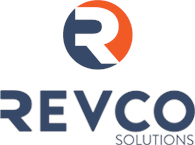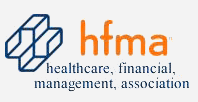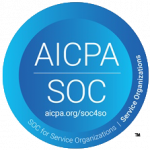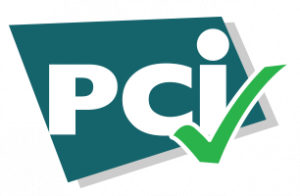It wasn’t too long ago that patient collections simply meant doing what it took to collect payments, and if it left patients with an unfavorable impression, so be it. Empathy, flexibility, understanding—these things didn’t have much of a place in the industry.

Happily, that picture looks very different today.
In keeping with many of the changes happening in healthcare itself, the healthcare RCM industry at large is embracing more patient-centered strategies and rejecting the aggressive, intimidating tactics that used to be so commonplace. Here, we’ll take a closer look at the pillars of this new, far more effective approach: empathy, multi-channel communication, consistent timing, installment options, and personalization.
What Does “Patient-First” Mean?
A patient-first, also known as patient-centered, strategy is one that puts the patient’s needs at the center of all operational decision-making. This translates into an approach that prioritizes the patient experience and actively works to remove obstacles from the patient’s path toward achieving the desired outcome—which, in the case of RCM, is bill payment.
It’s distinct from a traditional approach to RCM in that patient-first strategies focus on maximizing value to the patient while also optimizing revenue collection. When the patient is put at the center of operations, patient experience improves and revenue increases.
A key element of the patient-first approach is that this perspective must be integrated into every stage of the patient journey, from the time they make an appointment or check-in to the post-visit follow-ups and payment experience. Patients go to a hospital because they’re in need of care, and your RCM team is an extension of that care.
The Five Pillars of Patient-First Debt Collection
When constructing a patient-first debt collection strategy, there are plenty of tools and processes to consider. However, unless your new approach is based on a strong, holistic foundation, it won’t succeed long term.
With that in mind, let’s dive into the pillars of patient-first debt collection:
- Empathy
- Multi-channel communication and billpay
- Consistency
- Flexibility
- Personalization
Empathy
Empathy is the base upon which every other element of your patient-first debt collection strategy has to be built. Before anything else, your RCM staff must be able to empathize with the patients they’re communicating with, so that they can start the conversation from a place of service and connection.
After all, healthcare debt is almost never the result of a choice—it’s because of a need. Sometimes that’s a life-or-death type of need.
Regardless of why the patient was in the hospital, it’s impossible for your RCM team to know exactly what they’ve been dealing with. At Revco, we emphasize this with our team members from day one and include a training video focused on building awareness of what patients could be going through. Our employees know that incorporating that awareness into the way they handle debt collection is paramount to creating positive outcomes, both in terms of patient experience and revenue collection.
Multi-channel communication and billpay
Multi-channel communication simply means that there are multiple ways for patients to communicate with you and pay their bills. Typically, that includes:
- Text or SMS
- Phone
- Chat
- Online payment portals
Offering patients multiple communication options does several things.
First, it mimics what patients are used to in almost all their other consumer relationships. Consider how retailers, individual sellers, and other organizations interact with their customers: they typically offer a choice when it comes to how they want to receive communications, based on the customer’s preference.
Second, an omnichannel strategy raises your chances of collecting payment. Text message billing, for example, can increase payments by 30 percent, according to The Journal of Medical Internet Research.
Consistent Timing
Just as patients want options when it comes to how to pay their bills, they also want to know when and how often you’ll be contacting them—and that it will be predictable.
Consistent timing with billing and communications helps patients plan their payments as well as know when to expect to hear from you. This is especially important with email and text, as you don’t want your messages to get buried in an overflowing inbox.
Flexibility
With the rising cost of insurance premiums and copays, a more frequent need for preauthorizations, and an uptick in insurance denials, it’s no surprise that most patients aren’t able to pay their entire bills upon leaving the hospital.
For many, the only feasible option is a flexible one. That’s why installment payments, partial payments, and financial assistance are critical components of a patient-first collection approach. The benefits of these go beyond revenue, as they also improve patient satisfaction, increase the likelihood of patients completing their treatment plans and returning to your facility for future care, and solidify your brand’s reputation as a compassionate care provider.
If your RCM team isn’t well-versed in these options, you’re leaving a significant chunk of revenue on the table. According to research by Experian Health, one out of 10 Americans used a payment plan to pay for their most recent doctor’s visit, while 28 percent of patients (excluding members of Gen Z), used a payment plan after receiving an unexpected medical bill. Without that flexibility, the only option left for patients who can’t pay the full amount is to delay payment for as long as possible.
Personalization
Personalization goes hand-in-hand with flexibility. Research has found that healthcare providers that implement personalized communications can see an increase in revenue of 10 percent and an increase in quality standards of 25 percent, while administrative costs drop 5-10 percent.
This isn’t surprising, given the data on patient preferences. According to one healthcare report, 75 percent of patients prefer to pay their medical bills online, even though 71 percent of providers still primarily use mail billing.
To personalize your billing, a good place to start is to offer an online payment portal. Payment portals that save customers’ information, like name, address, and credit card, can greatly streamline the payment process and give customers the personalization and ease of use that they want.
Patient-First Steps Your RCM Team Can Take
Even if your team hasn’t explicitly adopted a patient-first approach to billing and revenue collection, it’s likely that you’ve already adopted at least some of the best practices that are in line with this mode of operating. To quickly assess how patient-centric your debt collection strategy is, take three minutes to fill out this helpful self-assessment! You’ll receive a score on a scale from 0 to 10, along with guidance on what changes your RCM team should prioritize.
As you move more toward this model, here are some steps you can take to help your staff through the transition.
Emphasize service to others in your staff trainings
Ongoing training is integral to RCM success, especially given the frequent changes to processes, rules, and protocols that payers implement.
However, while your staff has to stay up to date on their hard skills, you don’t want to neglect the soft ones. Staff also need training on how to listen actively, how to offer empathetic responses, and how to react appropriately to what the patient is saying while still staying on script.
Use speech analytics to gain insight into your team’s effectiveness
Speech analytics programs can offer you a wealth of information. These tools analyze not just the words your team members are using, but also the tone of voice, amount of time spent in silence, and many other vocal cues that can give insight into how your team members are relating to patients.
At Revco, we use speech analytics to see the amount of time the representative is speaking, how long the patient is speaking, the amount of time spent in silence, and more. We have standards that our team attempts to meet in each of these categories. When we review that data, we can determine how successful a call has been in many senses of the word—not just based on whether or not we received payment.
Transforming Your Revenue Cycle with a Patient-First Approach
Taking a patient-first approach to debt collection can bring your healthcare organization countless benefits, from boosting your patient experience to shortening your revenue cycle.
We know this from experience. At Revco, we commit to putting the patient first in every interaction, and we’re thrilled to see other industry leaders following the same playbook.
Not only is this change a positive for the patients and healthcare organizations we serve—it also impacts those of us working in RCM ourselves. There’s no question that RCM staff enjoy their jobs much more when they feel they’re able to help the person on the other end of the phone line, rather than make their life even harder.
In short, patient-centered collections are a win-win-win: better for patients, better for providers, and better for your bottom line.
Learn More About Patient-First Debt Collection
Ready to learn more about implementing a patient-first approach? These posts can help you on your way:






